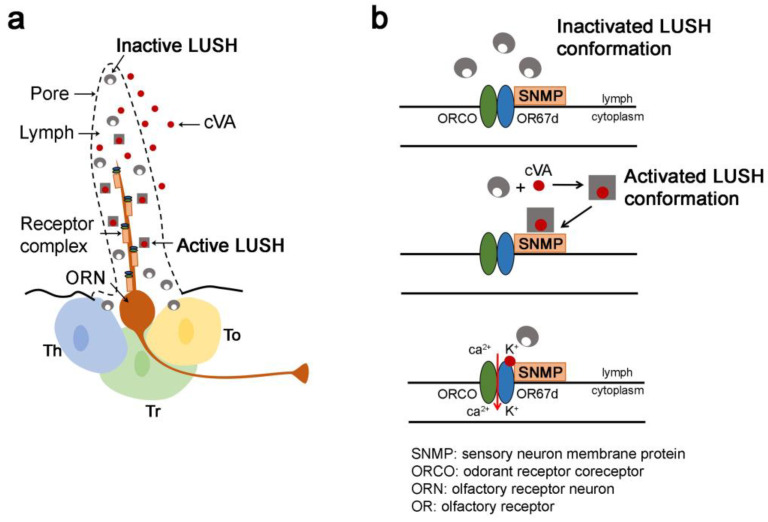Figure 6.
Model of the mechanism of the conformational activation of LUSH leading to cis-Vaccenyl Acetate (cVA) pheromone detection. (a) Schematic drawing of at1 cVA-sensing trichoid sensillum. This sensillum is punctured by multiple pores and houses one olfactory receptor neuron (ORN). The heteromeric complex composed of the OR67d pheromone receptor/ORCO coreceptor and the CD36-related sensory neuron membrane protein (SNMP) is localized on the ORN dendrite. Three accessory cells, trichogen (Tr), thecogen (Th) and tormogen (To) cells, surround the cell body of the ORN. Thecogen and the tormogen cells both secrete sensillar lymph components, including OBPs. (b) Top: in the absence of the cVA pheromone, LUSH is in an inactive state, and when bound to cVA, LUSH undergoes a conformational change. Middle and bottom: subsequently, direct or indirect interaction of “cVA/LUSH” with SNMP1 induces the release and transfer of cVA to the ligand-binding site within the OR67d/ORCO complex. Adapted from [121,122].

